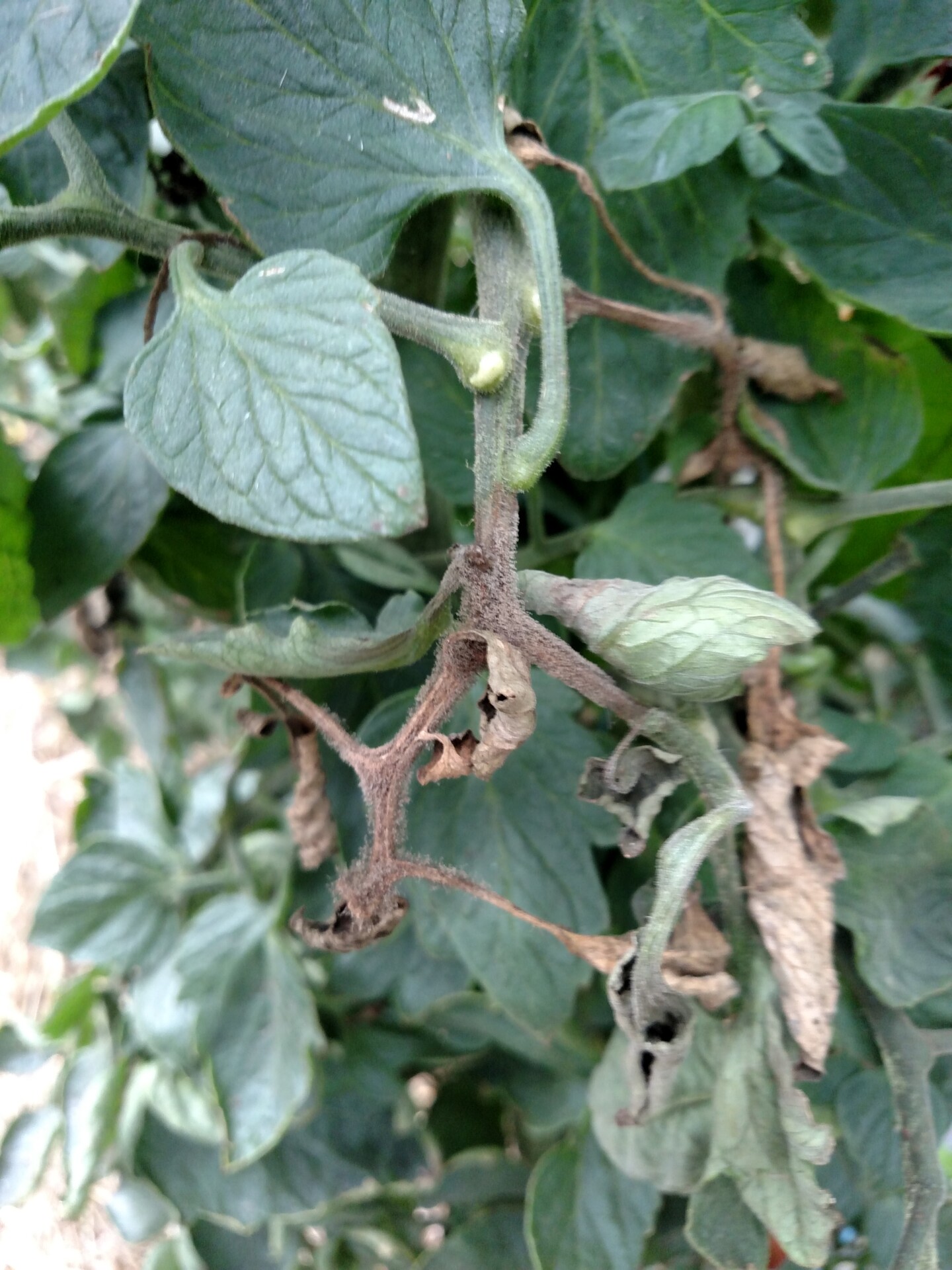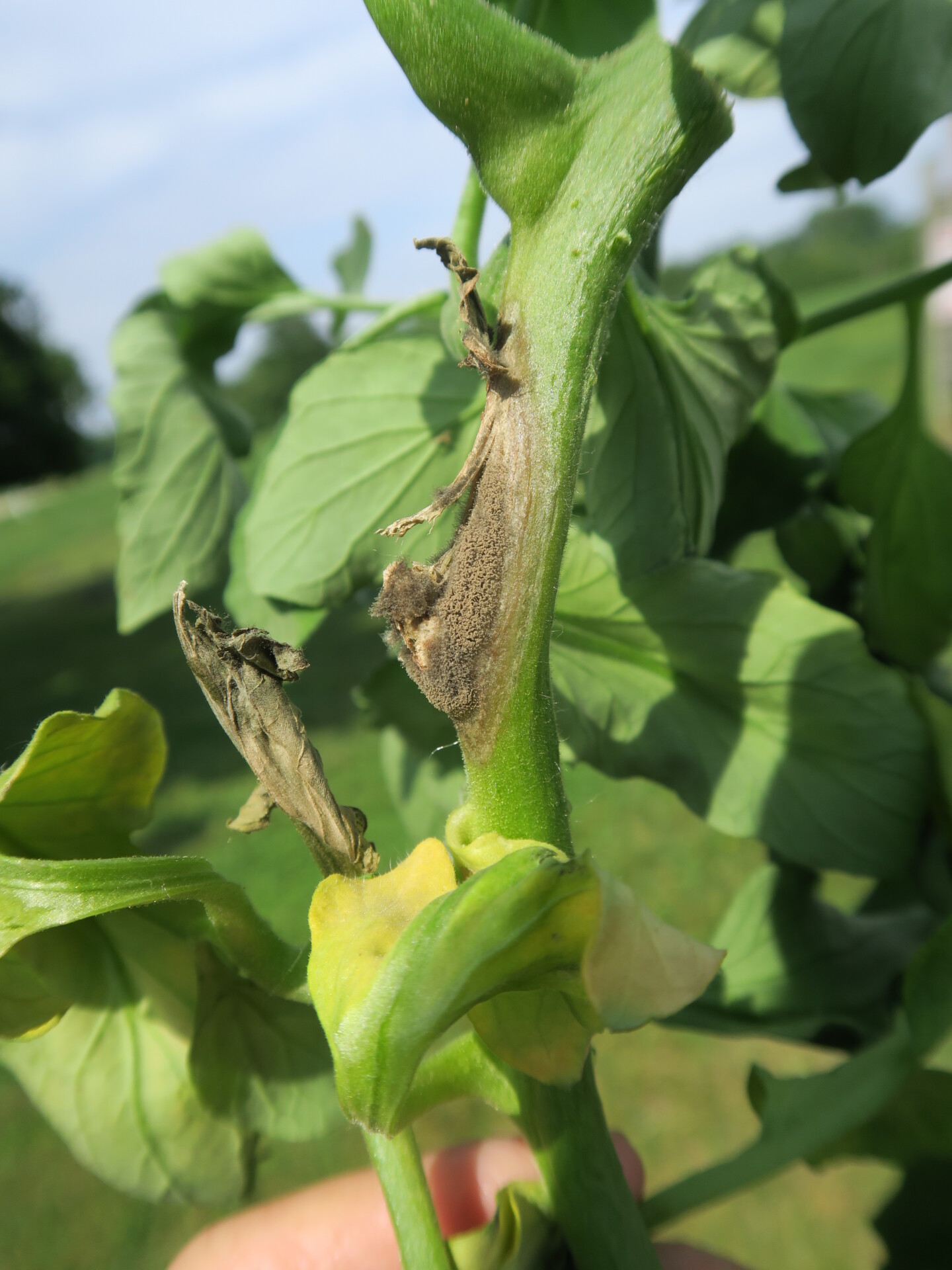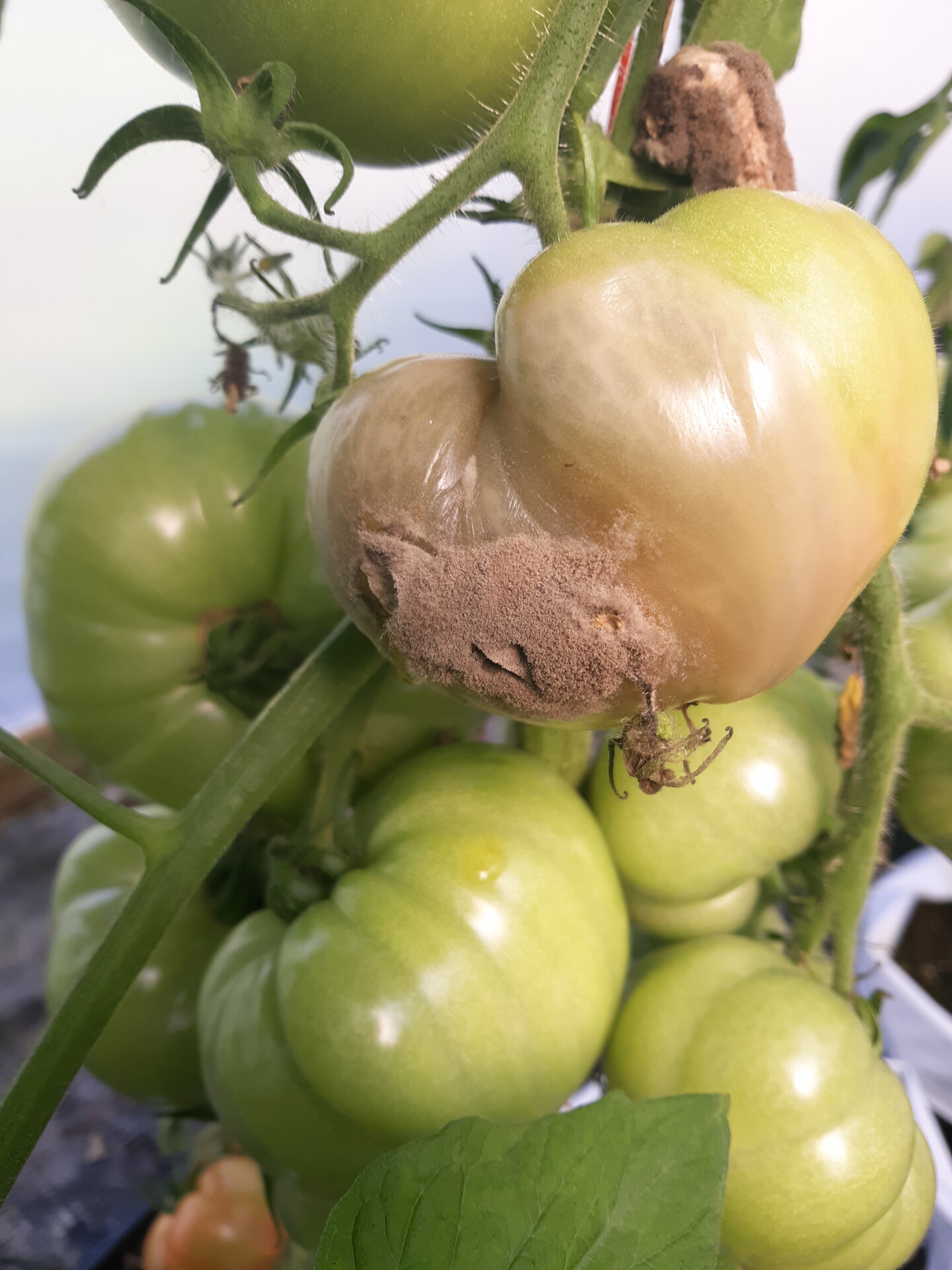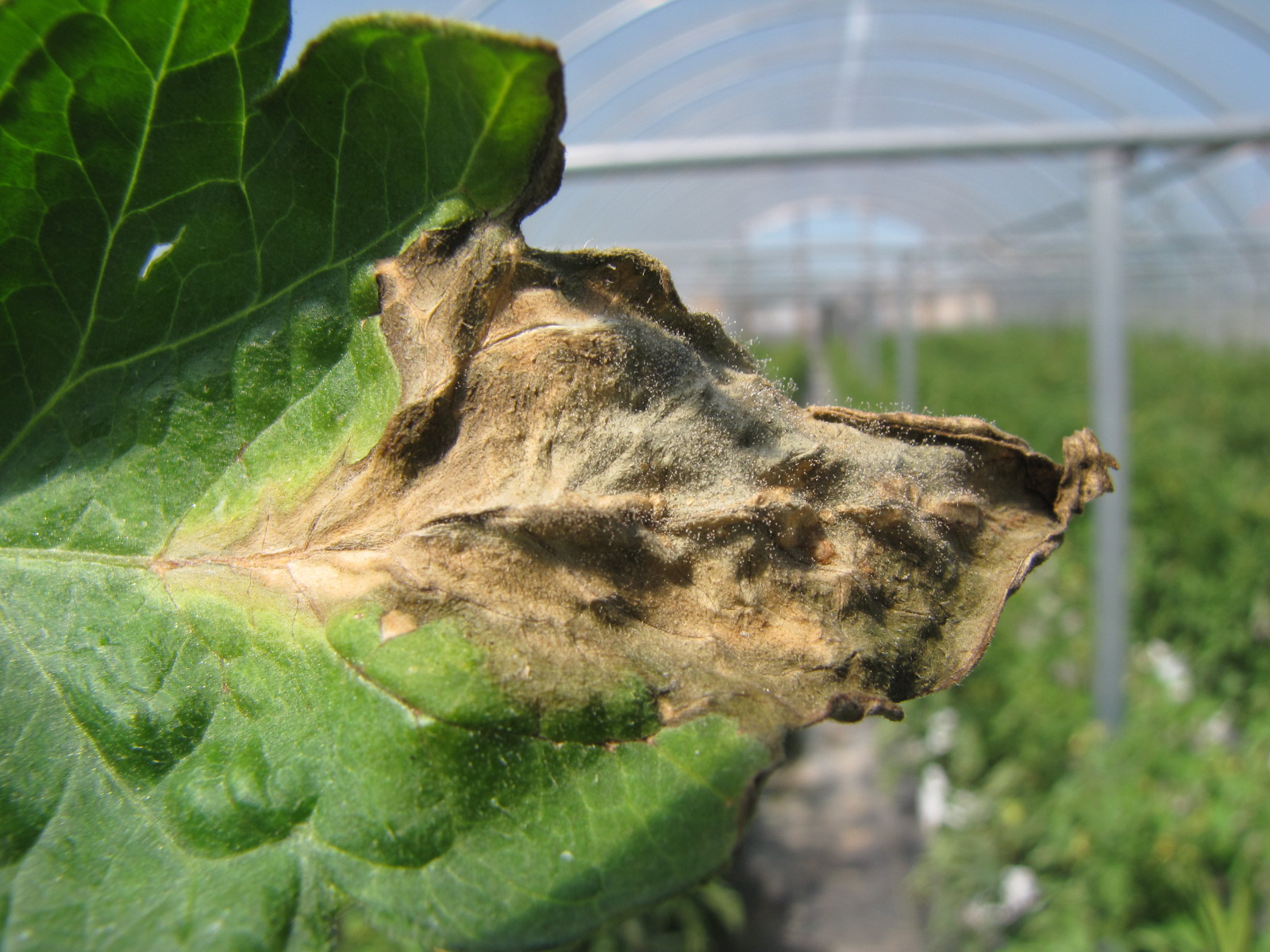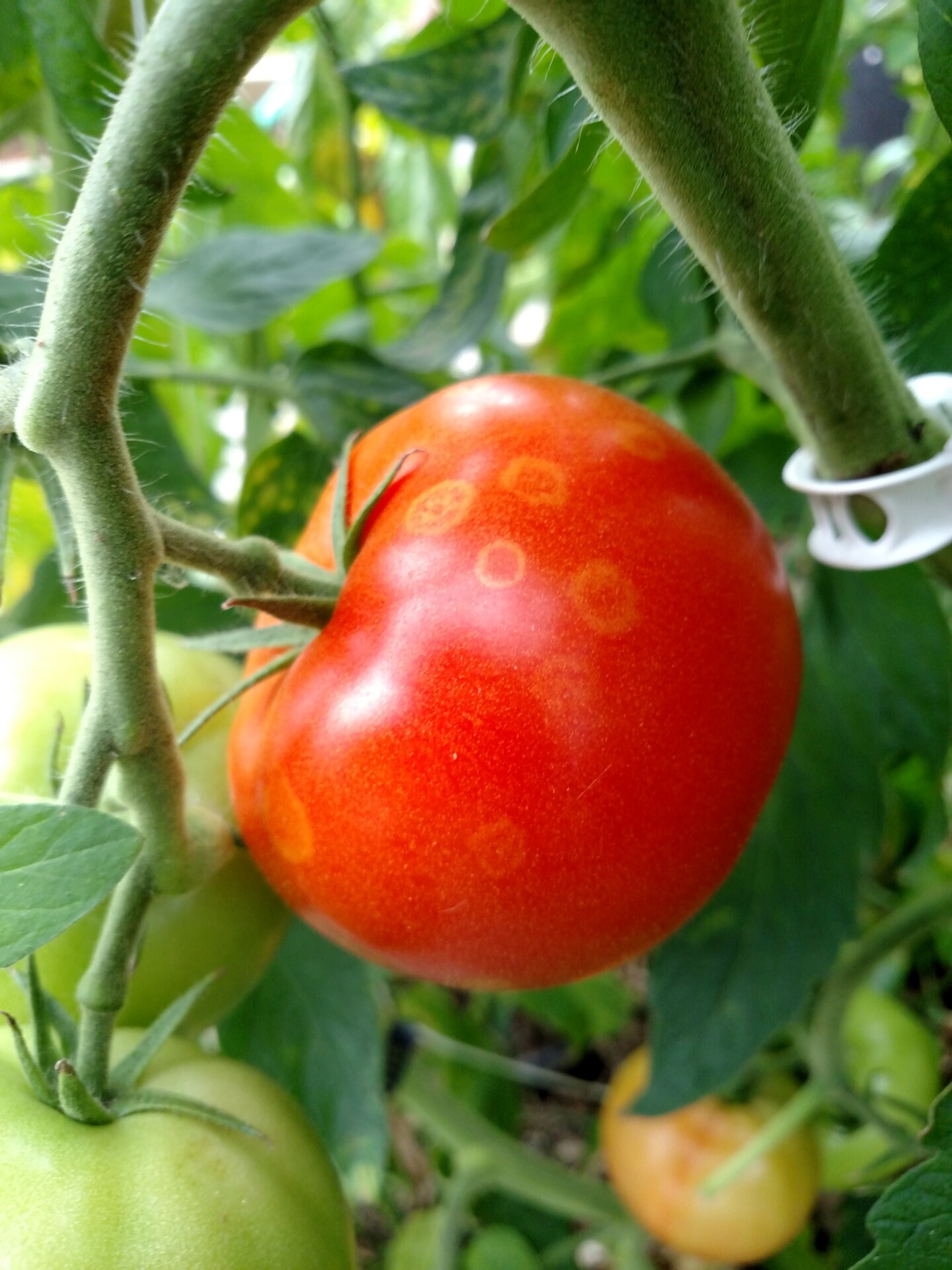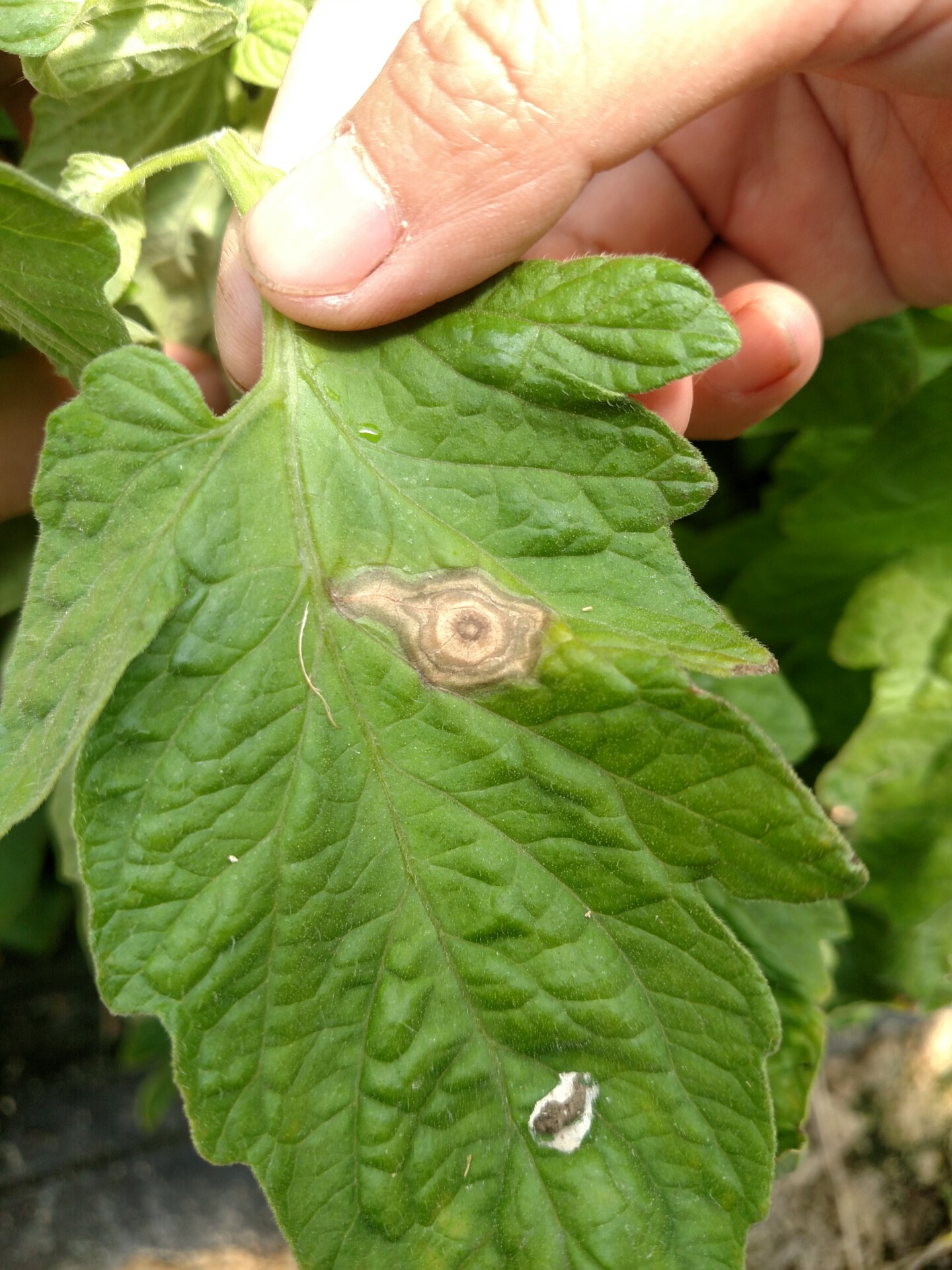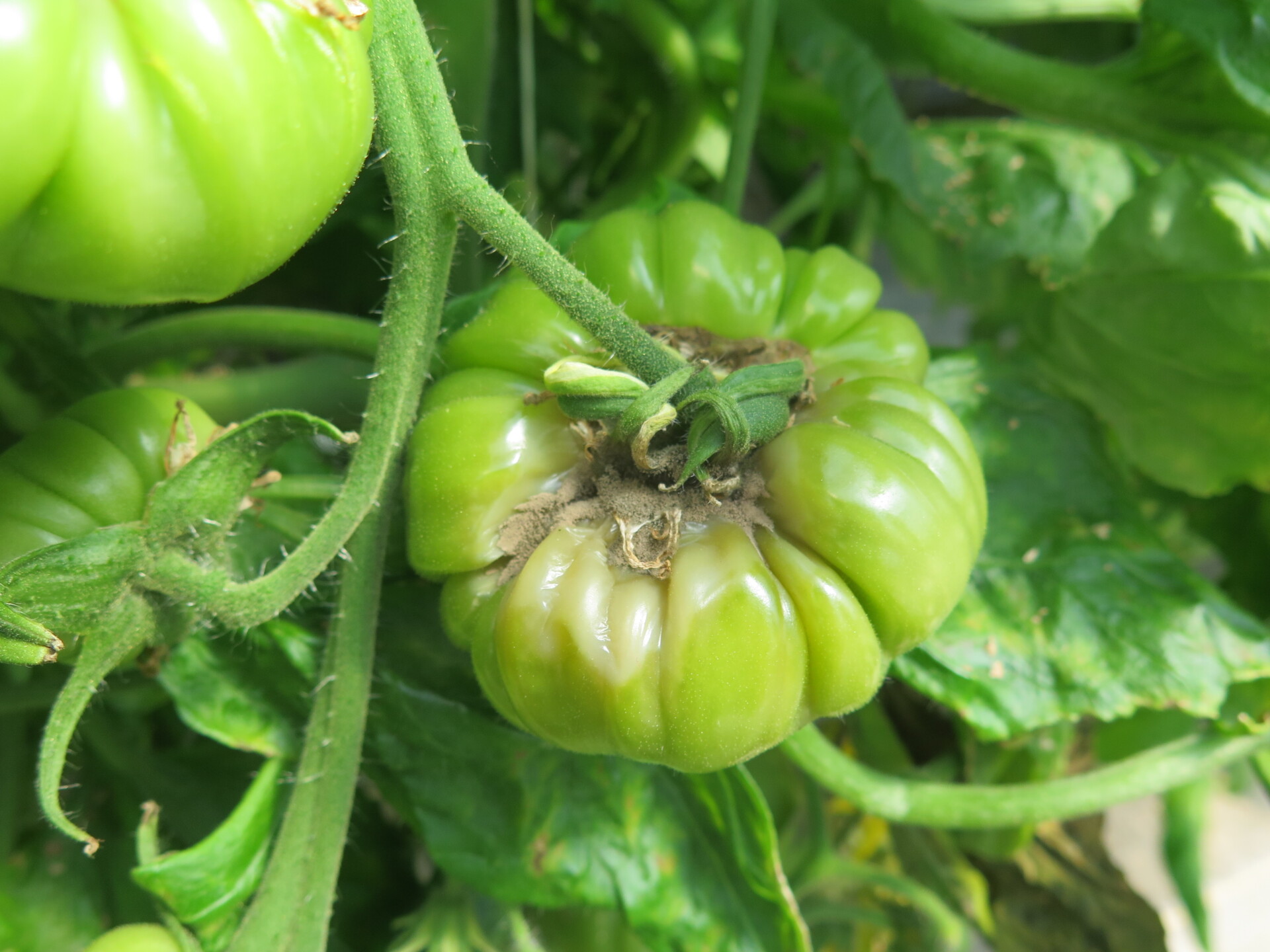gray mold of tomato
 Figure 3. Gray mold lesions on leaves are often light brown or gray, often on the edge of the leaf and may show a ring-structure. Note sporulation of fungus observed in the crack of the lesion.
Figure 3. Gray mold lesions on leaves are often light brown or gray, often on the edge of the leaf and may show a ring-structure. Note sporulation of fungus observed in the crack of the lesion. 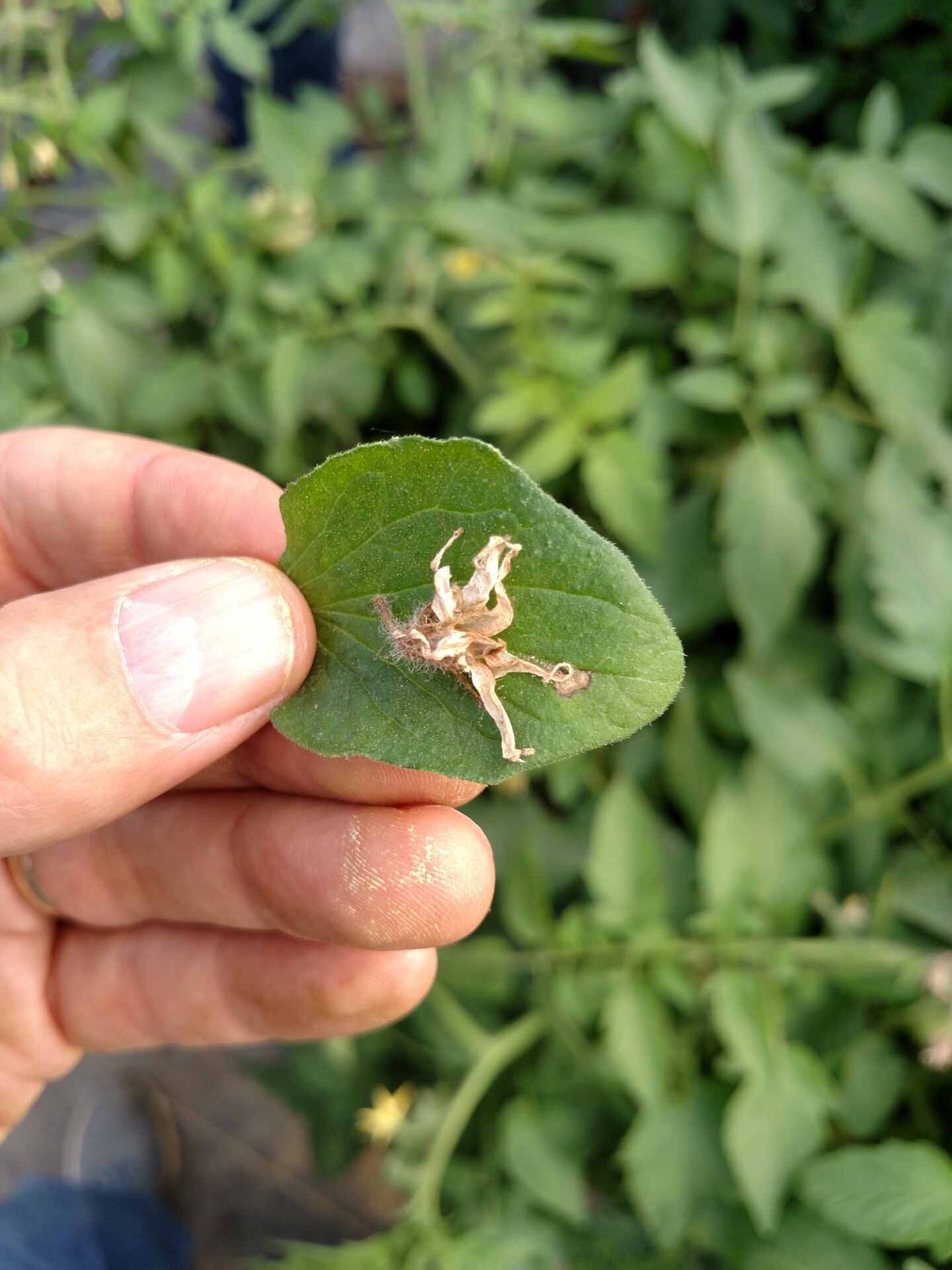 Figure 9. Tomato flower blossom with gray mold sporulation appears to have fallen on leaf where a new lesion has started.
Figure 9. Tomato flower blossom with gray mold sporulation appears to have fallen on leaf where a new lesion has started. 
